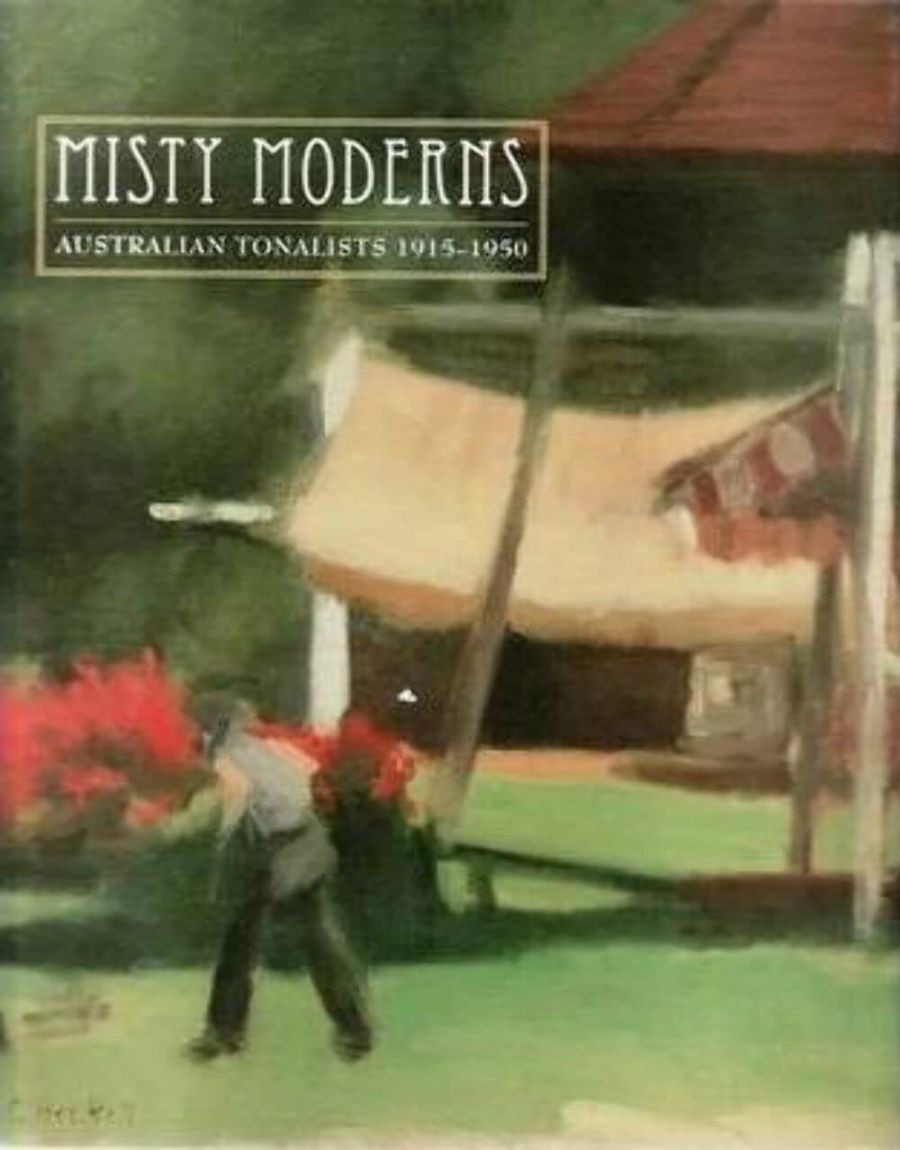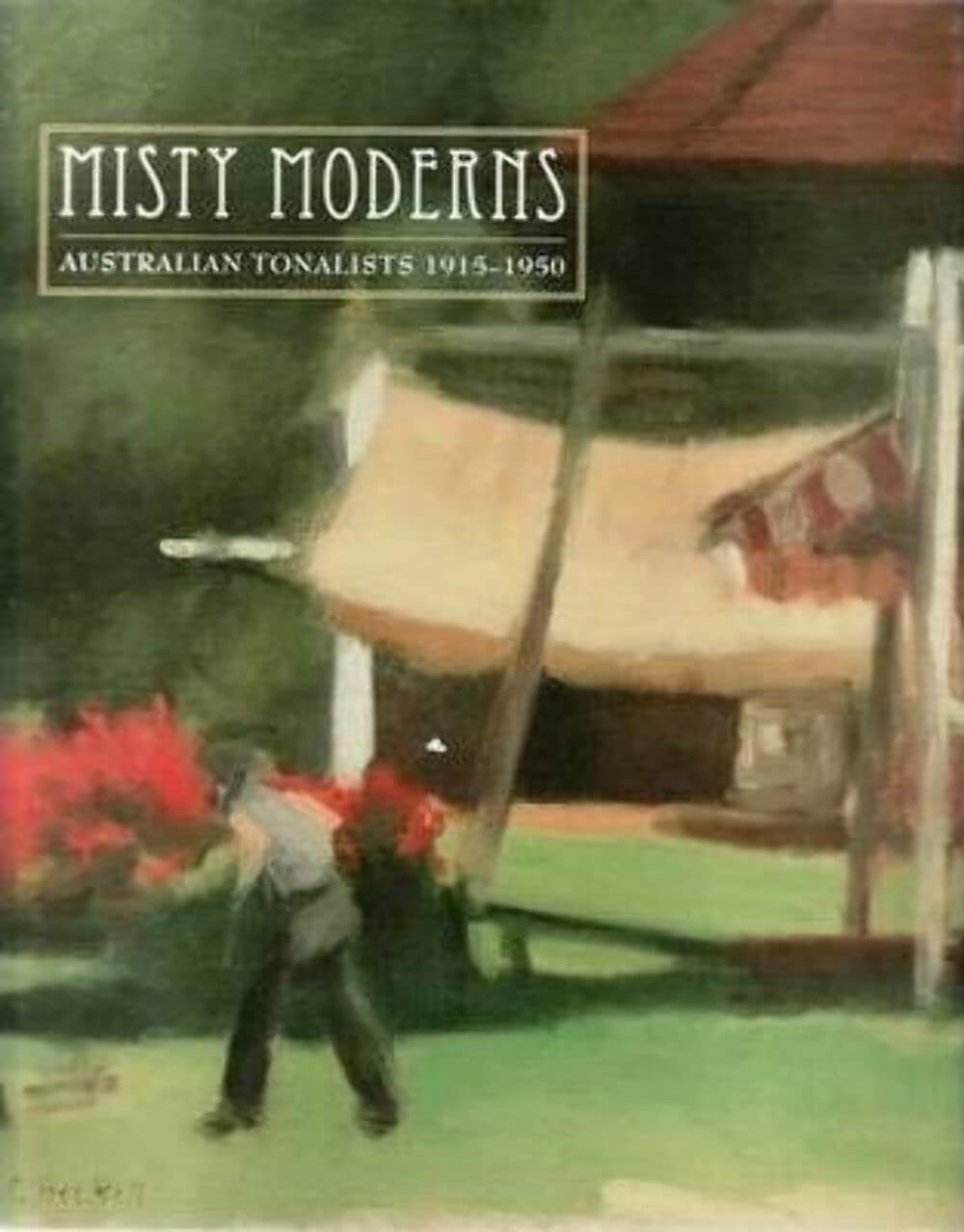
- Free Article: No
- Contents Category: Art
- Review Article: Yes
- Article Title: Provocative tones
- Online Only: No
- Custom Highlight Text:
Curated by Tracey Lock-Weir, Misty Moderns: Australian Tonalists 1915–1950 at the Art Gallery of South Australia presented a re-evaluation of Max Meldrum (1875–1955) and the influential Australian tonalist phenomenon of the first half of the twentieth century. This recent exhibition was accompanied by an elegant publication in which Lock-Weir’s substantial essay (divided into readily digestible chapters) makes the claim that Meldrum and his tonalist doctrine had a more far-reaching impact than has previously been recognised. Accordingly, paintings by Meldrum and his followers – including Clarice Beckett, Colin Colahan, A.D. Colquhoun, John Farmer, Polly Hurry, Justus Jorgensen, Percy Leason, A.E. Newbury and Hayward Veal – were augmented by the work of artists more fleetingly influenced by his ideas, such as Roy de Maistre, Elioth Gruner, Lloyd Rees and Roland Wakelin. Although William Frater and Arnold Shore produced a number of tonalist paintings, Lock-Weir observes that by 1926 they had ‘broken away into colour and line’, later becoming the leading proponents of modernism in Melbourne.
- Book 1 Title: Misty Moderns
- Book 1 Subtitle: Australian Tonalists 1915–1950
- Book 1 Biblio: AGSA, $39.95 pb, 143 pp
- Book 1 Cover Small (400 x 600):

- Book 1 Cover (800 x 1200):

Outspoken, didactic, but nonetheless charismatic, the Edinburgh-born Meldrum considered modern art ‘a pathological symptom of the diseased condition of modern civilisation’. Interestingly, of all the Australian artists who travelled to Europe to work or study in the first decades of the twentieth century, the French-speaking Meldrum was the one who stayed the longest (1900–12) and who remained the least affected (except in a negative sense) by the profound contemporaneous developments in art.
Following his return to Melbourne, where he opened a private art school, in 1919 he published the first serious theoretical text by an Australian artist, titled Max Meldrum: His Art and Views. Although tonalism was by no means a new concept, he advocated a method based on scientific principles that dispensed with preliminary drawings in order to record not only precise tonal relationships (setting aside concerns of colour and form) but a prescribed sequence of visual impressions in a descending order of mass tonal values.
The conceptual shift in Meldrum’s thinking is given compelling visual expression in Misty Moderns through the alignment of the Camille Corot-influenced Picherit’s Farm (1910) and Frosted poplars, Pacé, Brittany (1912) with the later Eltham (gum tree) landscapes of 1917 – including The three trees – which embodied his new theories. (The inclusion in the catalogue of an image of Hans Heysen’s The three gums, 1915–20, effectively underscores the extent of Meldrum’s departure from prevailing Australian landscape traditions.)
‘Sunny weather,’ Meldrum wrote to Basil Burdett, ‘is all very well to paint potboilers, or to go surfing, but when one is trying to record impressions in their order it is hopelessly impossible.’ Adverse weather conditions, as Misty Moderns abundantly demonstrates, held an irresistible appeal. The fog and sleet of wintry Melbourne were impeccably manipulated by Clarice Beckett, who studied with Meldrum for only one year, following three years at the National Art School. It is clear that having absorbed his theories she developed her own distinctive style. Accorded the most prominent position in Misty Moderns, a selection of her outstanding paintings from the early 1930s, including Taxi rank (c.1931) and Passing trams (c.1931), was arrayed along the exhibition’s sole coloured wall.
Lending life to the exhibition (and the catalogue) is some fascinating photographic material, including photographs of the Meldrum Group exhibitions (1919–21) that were staged at Melbourne’s Athenaeum Hall. Collectively, the work constituted a manifesto, and in order to enhance viewers’ perceptual experience, the paintings were presented en masse in uniform black frames (in the manner Lock-Weir notes of a late twentieth-century installation) and were listed in the catalogue without titles.
Lock-Weir cites Rees’s 1969 memoir in which he stated that, ‘Meldrum’s influence was probably greatest among those who were not his followers – among established artists whose work gained strength and simplicity through the application of his ideas and not by slavish imitation of his methods.’ Certainly, works in Misty Moderns by de Maistre, Gruner, Godfrey Miller, Wakelin and Rees lend weight to the latter’s contention.
With a comprehensive chronology and an additional short essay by Peter Perry, Misty Moderns undoubtedly provides a valuable insight into a neglected period of Australian art history. It is interesting to read that prominent conceptual artist Ian Burn (who had initially worked in the Meldrum manner) based his first minimalist paintings in 1965 on the coloured optical diagrams in Meldrum’s The Science of Appearances (1950). Given Lock-Weir’s claims for a more expansive sphere of tonalist influence (Tom Roberts and Fred Williams, for example), and given her assertion that Meldrum’s emphasis on process paved the way for the minimalism and conceptualism of the 1960s and 1970s, Misty Moderns might even be viewed as provocative.


Comments powered by CComment